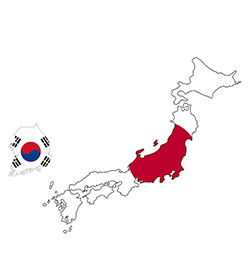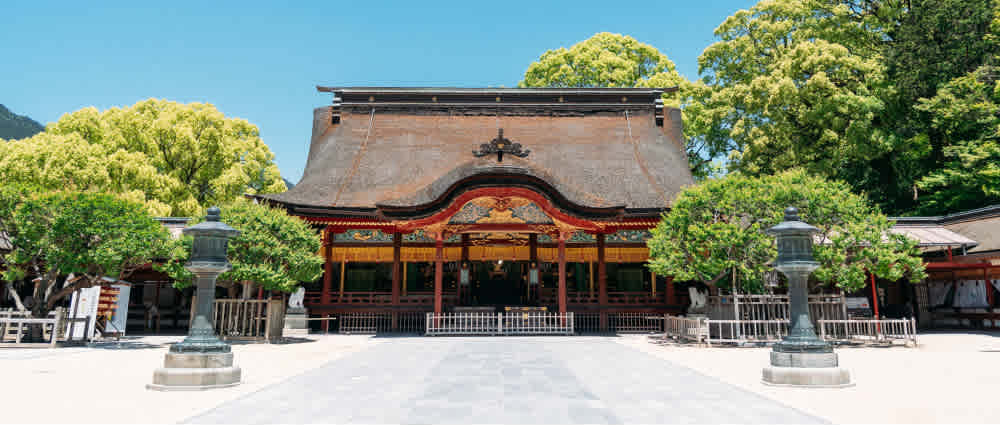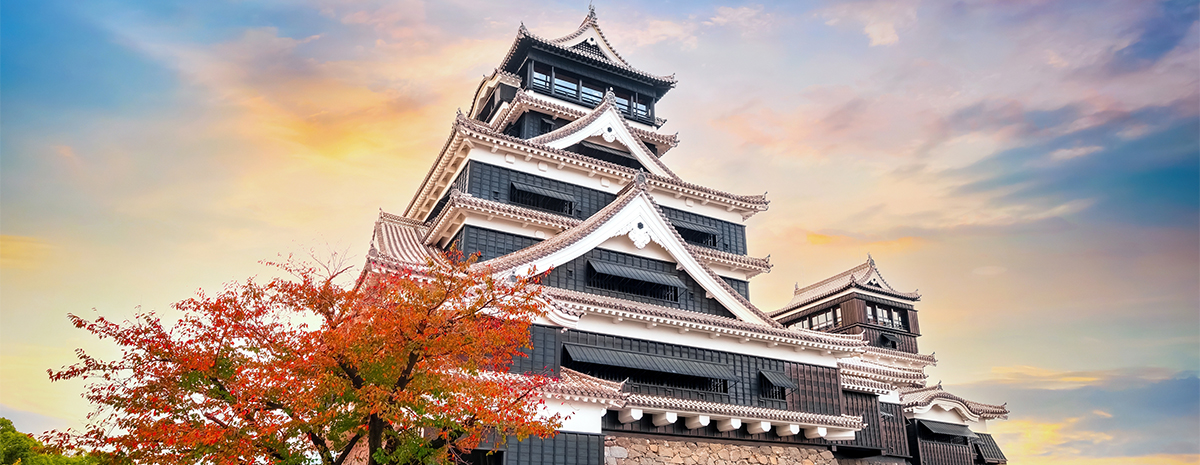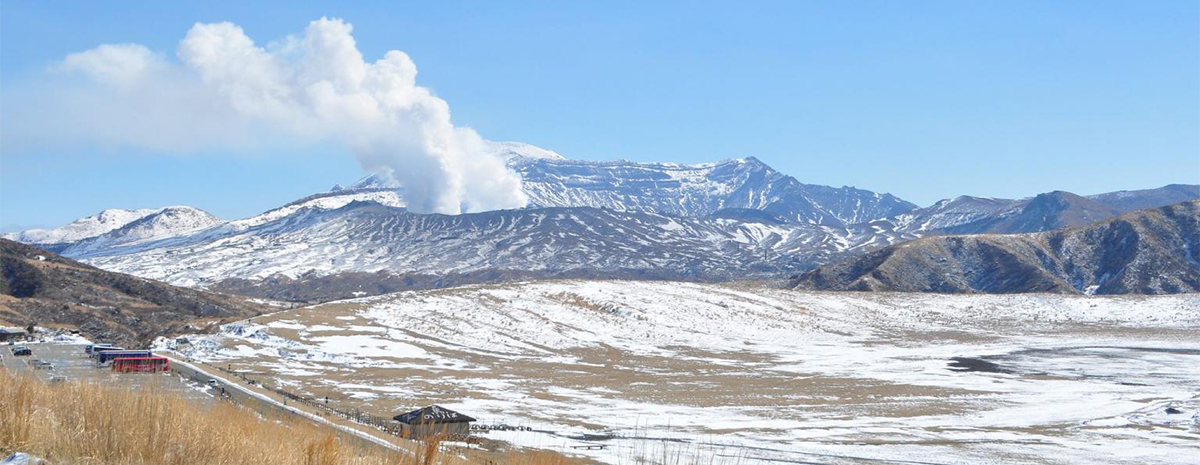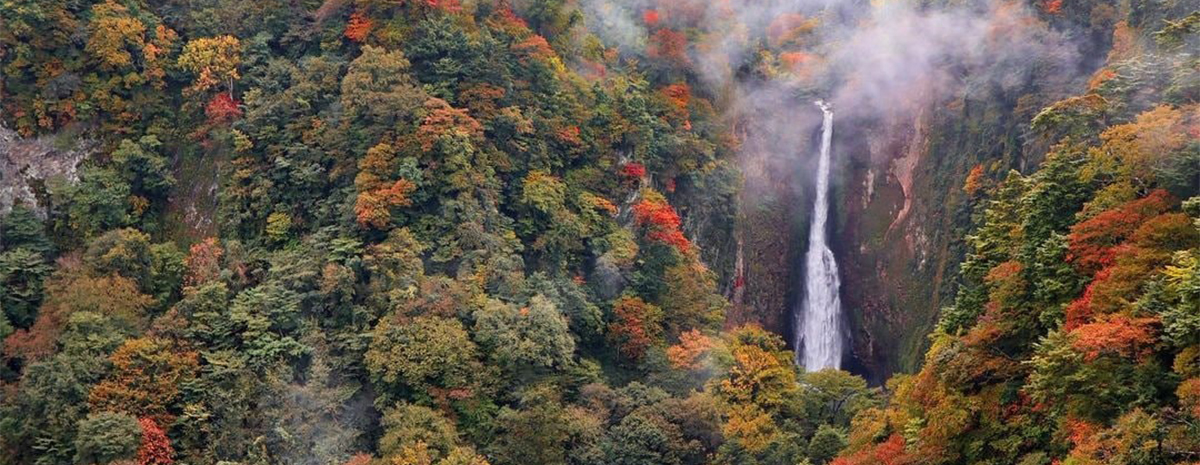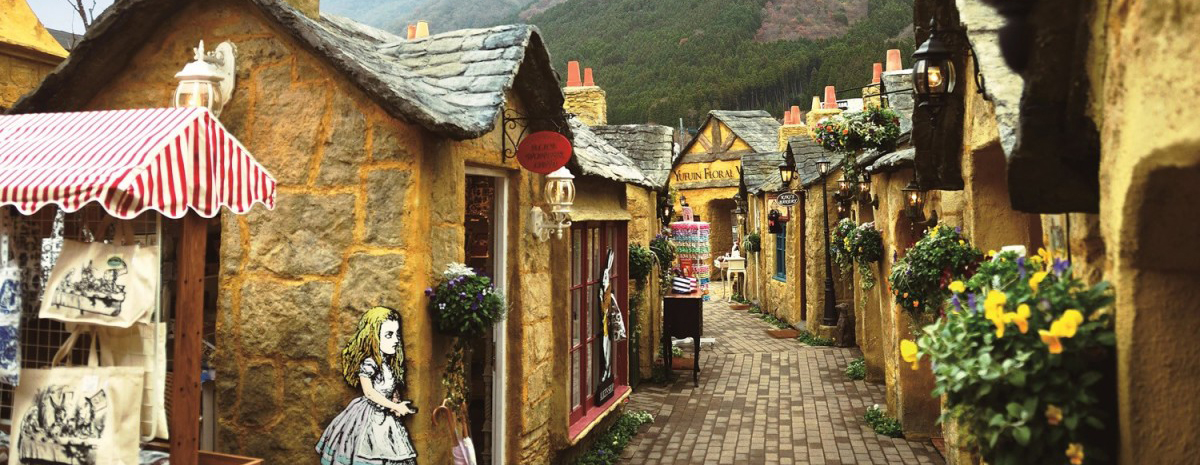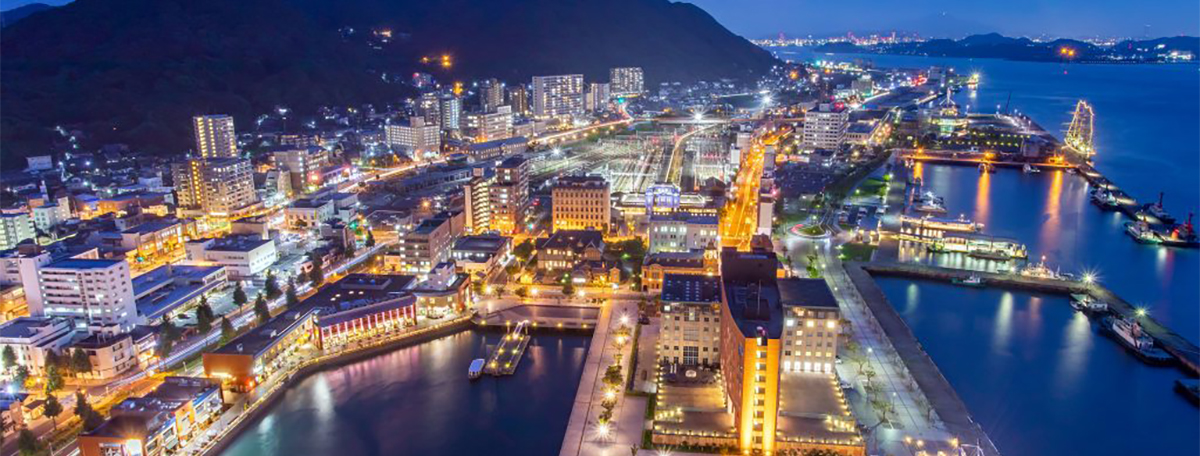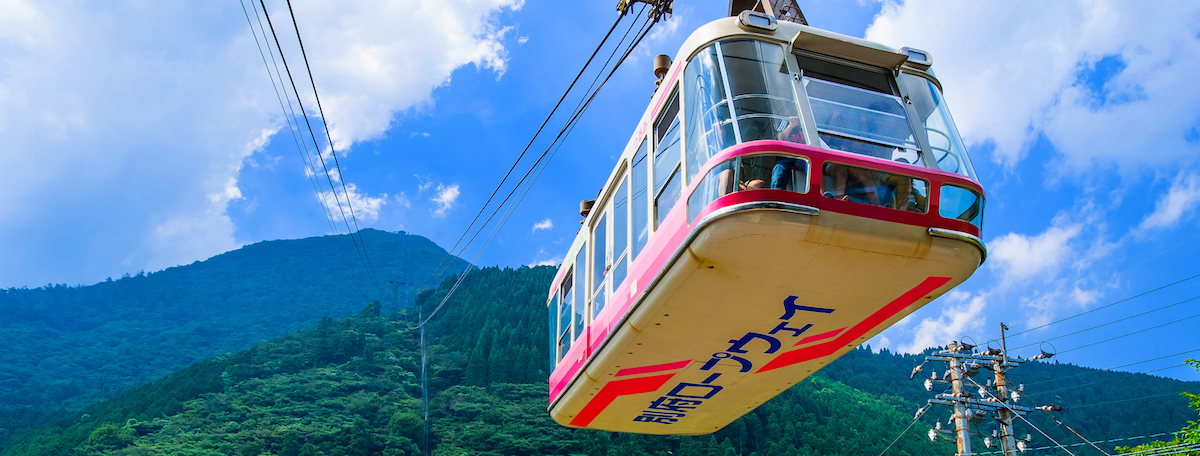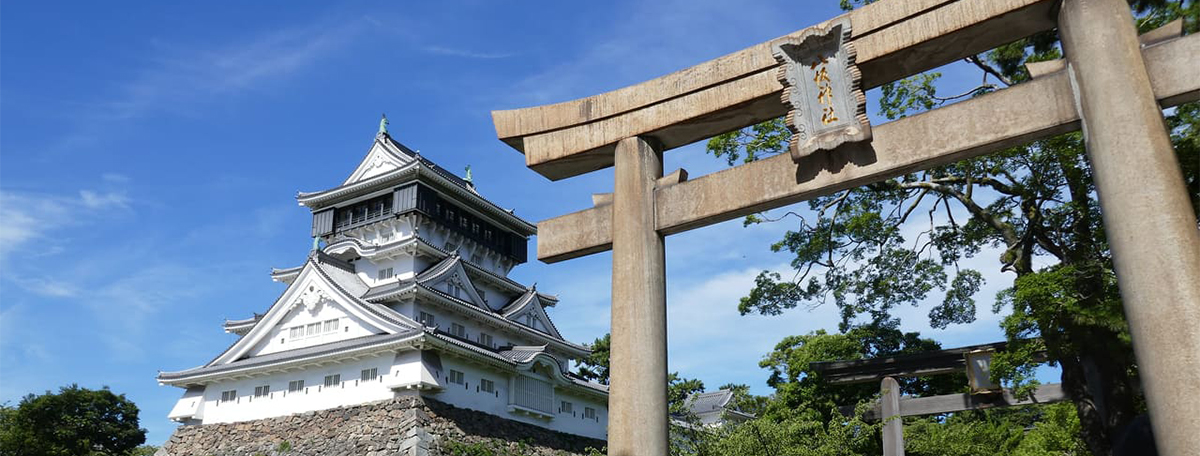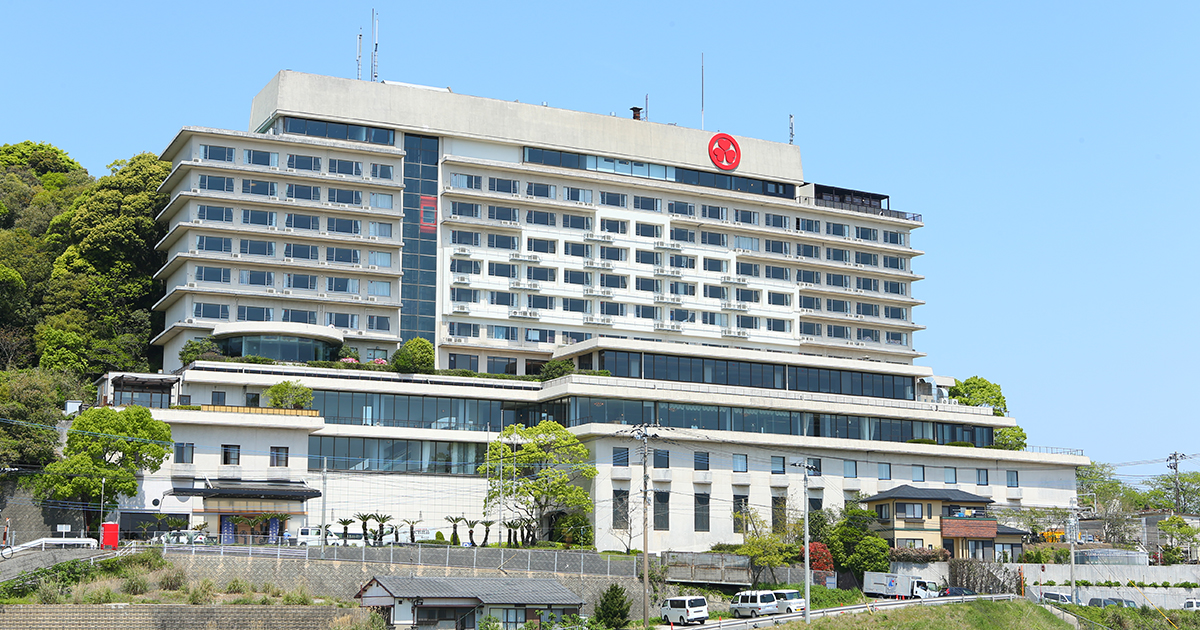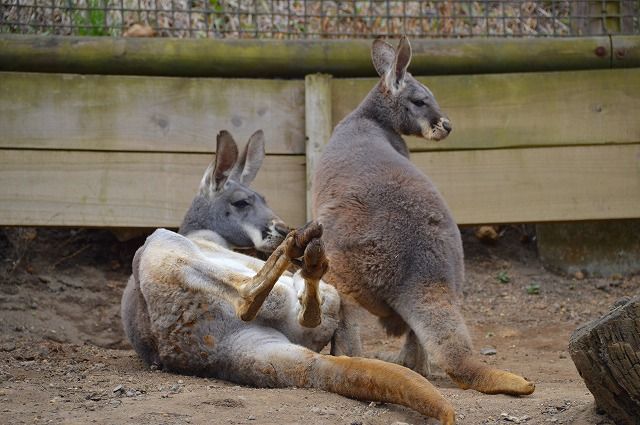Kitakyushu 7 day customized tour
 |
 |
 |
 |
Kitakyushu 7 day customized tour
Can help to book air tickets and hotels
Flight to Fukuoka Airport suggest schedule
| Airline | Flight Departure Number | Departure Time | Flight Arrival Number | Arrival Time |
 |
CI 110 | 06:50 | CI 117 | 20:35 |
 |
BR 106 | 08:10 | BR 101 | 20:55 |
 |
JX 840 | 14:45 | JX 841 | 19:00 |
| Itinerary | ||
| Item | Place of accommodation | |
| Day 1 | Fukuoka Airport > Free activity |
Stay in ANA Crowne Plaza |
| Day 2 | Fukuoka > Dazaifu Tenmangu > Kujuku Islands > Glover Garden |
Stay in Inasayama Kanko Hotel or Ooedo-Onsen-Monogatari Nagasaki Hotel Seifu |
| Day 3 | Kumamoto Castle > Mt. Aso > Kusa-Senrigahama > Kyushu Hot Springs |
Stay in Aso Hakuun Sanso |
| Day 4 | Kyushu Hot Springs > Kokonoe Yume Otsuribashi > Yunotsubo Kaido > Yufuin Floral Village > Kinrinko Lake > Beppu Ropeway > Umi Jigoku | Stay in Grandvrio Hotel Beppuwan Wakura |
| Day 5 | Beppu > African Safari > Showa Town > Senbutsu Limestone Cave |
Stay in RITOAS |
| Day 6 |
Kokura > Karato market > Mojiko Retro > Tanga Market > Kokura Castle > Uomachi Gintengai Street |
Stay in ANA Crowne Plaza |
| Day 7 |
Fukuoka Airport > Taoyuan International Airport |
Back to Taiwan |
Japan Private tour price and customized itinerary
https://tttrips.com/theme/chartered_car/40
Day 1 Fukuoka Airport > Free activity > Stay in ANA Crowne Plaza
ANA Crowne Plaza
ANA Crowne Plaza, located in the heart of Fukuoka City, Japan, is a luxury hotel renowned for its elegant design and top-notch service. Situated near the bustling Hakata area, it caters to both business and leisure travelers. The spacious rooms are equipped with modern amenities and feature large windows offering views of the city or harbor.
The restaurant offers a diverse range of cuisines, including Japanese, Western, and buffet options. The hotel boasts a stylish bar, a fitness center, hot springs, and meeting rooms. Conveniently positioned near major transportation hubs and various entertainment facilities, ANA Crowne Plaza provides a luxurious and comfortable accommodation experience.
Day 2 Fukuoka > Dazaifu Tenmangu > Kujuku Islands > Glover Garden > Stay in Inasayama Kanko Hotel or Ooedo-Onsen-Monogatari Nagasaki Hotel Seifu
Dazaifu Tenmangu
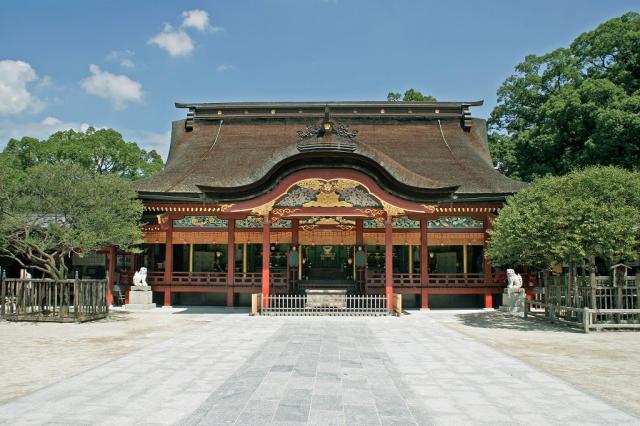
Among the hundreds of Tenmangu Shrines throughout Japan, Dazaifu's is the most important one alongside Kyoto's Kitano Tenmangu. Tenmangu Shrines are dedicated to the spirit of Sugawara Michizane, a scholar and politician of the Heian Period. Because of his great learning, Michizane has been associated with Tenjin, a Shinto deity of education, and is popular among students.
Michizane displayed his remarkable talents from a young age, and had already begun composing poetry by the age of eleven. His political career developed quickly, and he was able to gain much influence within the imperial court, which was then dominated by the Fujiwara clan. However, his rise to power resulted in rivalries between Michizane and the Fujiwara, which ultimately resulted in Michizane's exile from the capital city of Kyoto to the far-off government office of Dazaifu.
Kujuku Islands
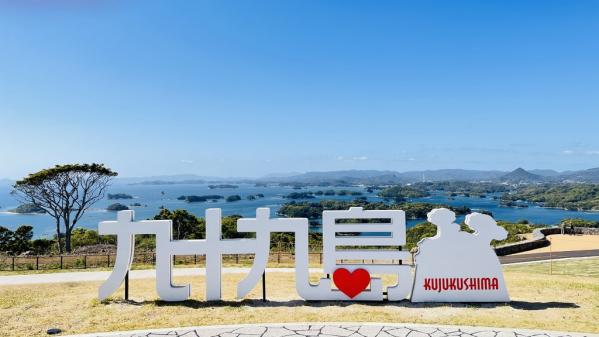
The Kujuku Islands, the westernmost islands off mainland Japan, cosist of 208 islands both large and small. The density of these islands is said to be the highest in Japan, and they offer beautiful, untouched nature. The beautiful contrast between the blue sea and the deep green of the trees covering the islands is a magnificent sight to behold. Enjoying the scenery from the ocean, via either a sightseeing boat or a sea kayak, is also recommended. There are also eight observatories in Sasebo City, called the "Eight Views of Kujuku Islands," where you can enjoy magnificent, panoramic views of the islands.
In 2018, the Kujuku Islands were certified as a member of the "Most Beautiful Bays in the World Club" by an international NGO.
Glover Garden
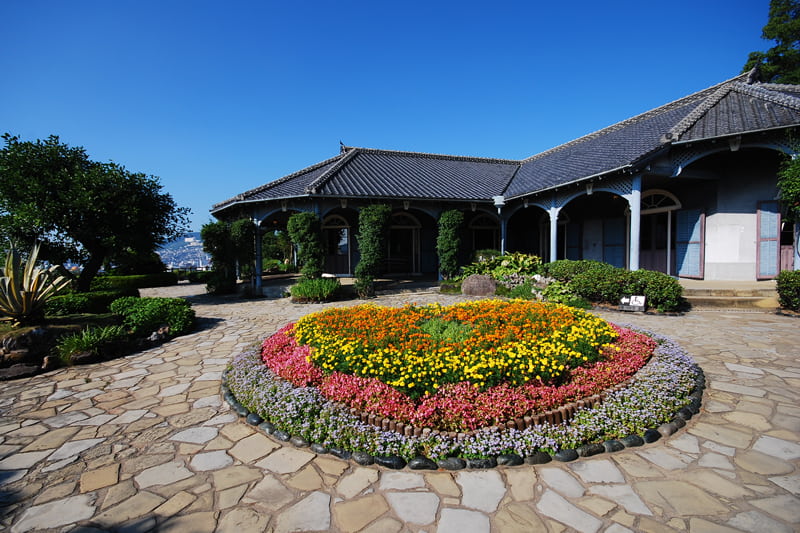
Glover Garden is an open air museum in Nagasaki that exhibits mansions of several of the city's former foreign residents and related buildings. It is located on the hill where Western merchants settled down after the end of Japan's era of seclusion in the second half of the 19th century.
The main attraction of the garden is the Former Glover House, the oldest wooden Western-style building in Japan. Thomas Glover (1838-1911) was a Scottish merchant who moved to Nagasaki after the opening of its port to foreign trade in 1859. He later assisted some of the revolutionaries who would eventually overthrow the Tokugawa Shogunate in the Meiji Restoration. Active in various industries, including shipbuilding and mining, Glover features prominently in the early history of Japan's industrialization.
Inasayama Kanko Hotel


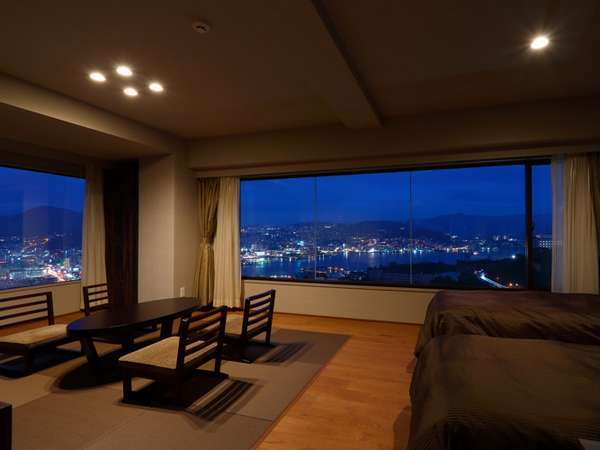
Ooedo-Onsen-Monogatari Nagasaki Hotel Seifu
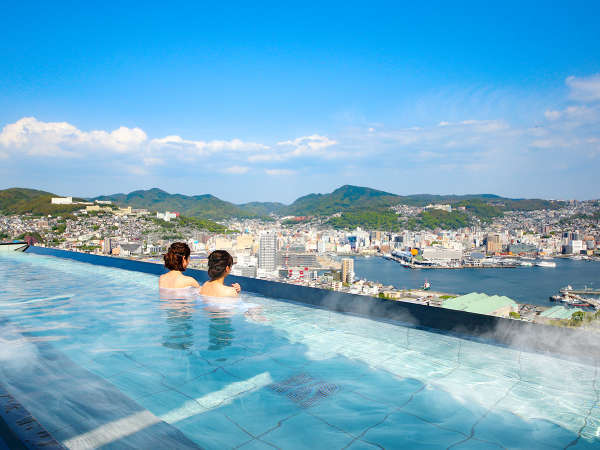
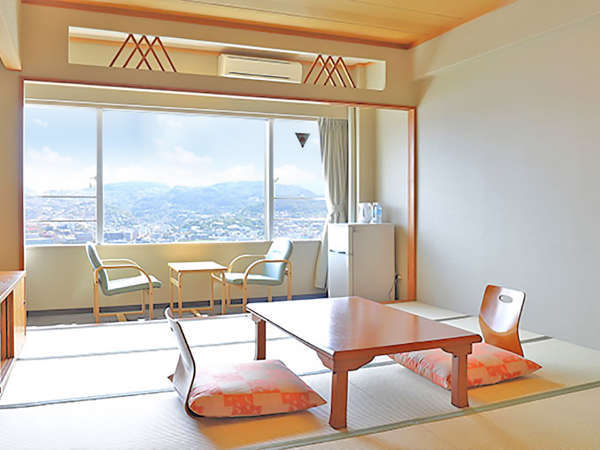

Day 3 Kumamoto Castle > Mt. Aso > Kusa-Senrigahama > Kyushu Hot Springs > Aso Hakuun Sanso
Kumamoto Castle
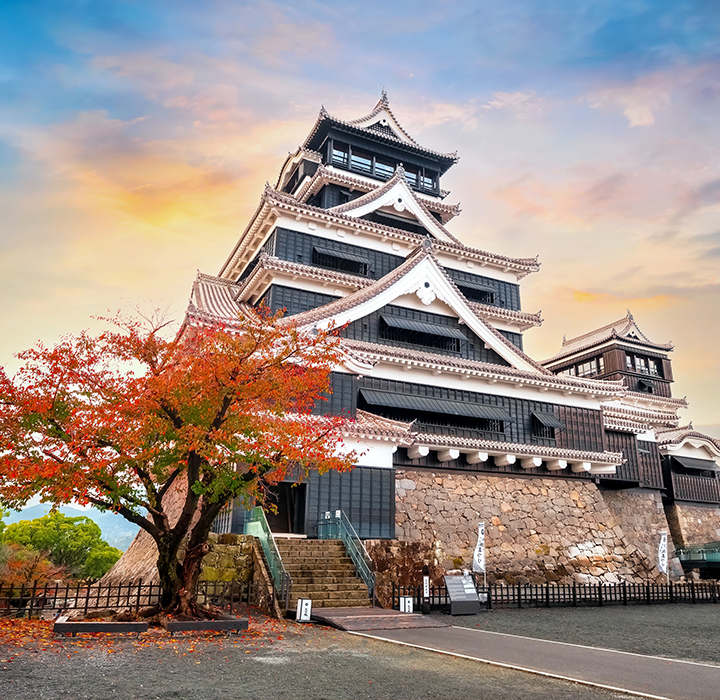
Kumamoto Castle (熊本城, Kumamoto-jō) is a hilltop Japanese castle located in Chūō-ku, Kumamoto, in Kumamoto Prefecture. It was a large and well fortified castle. The castle keep (天守閣, tenshukaku) is a concrete reconstruction built in 1960, but several ancillary wooden buildings remain of the original castle. Kumamoto Castle is considered one of the three premier castles in Japan, along with Himeji Castle and Matsumoto Castle. Thirteen structures in the castle complex are designated Important Cultural Property.
Kusa-Senrigahama
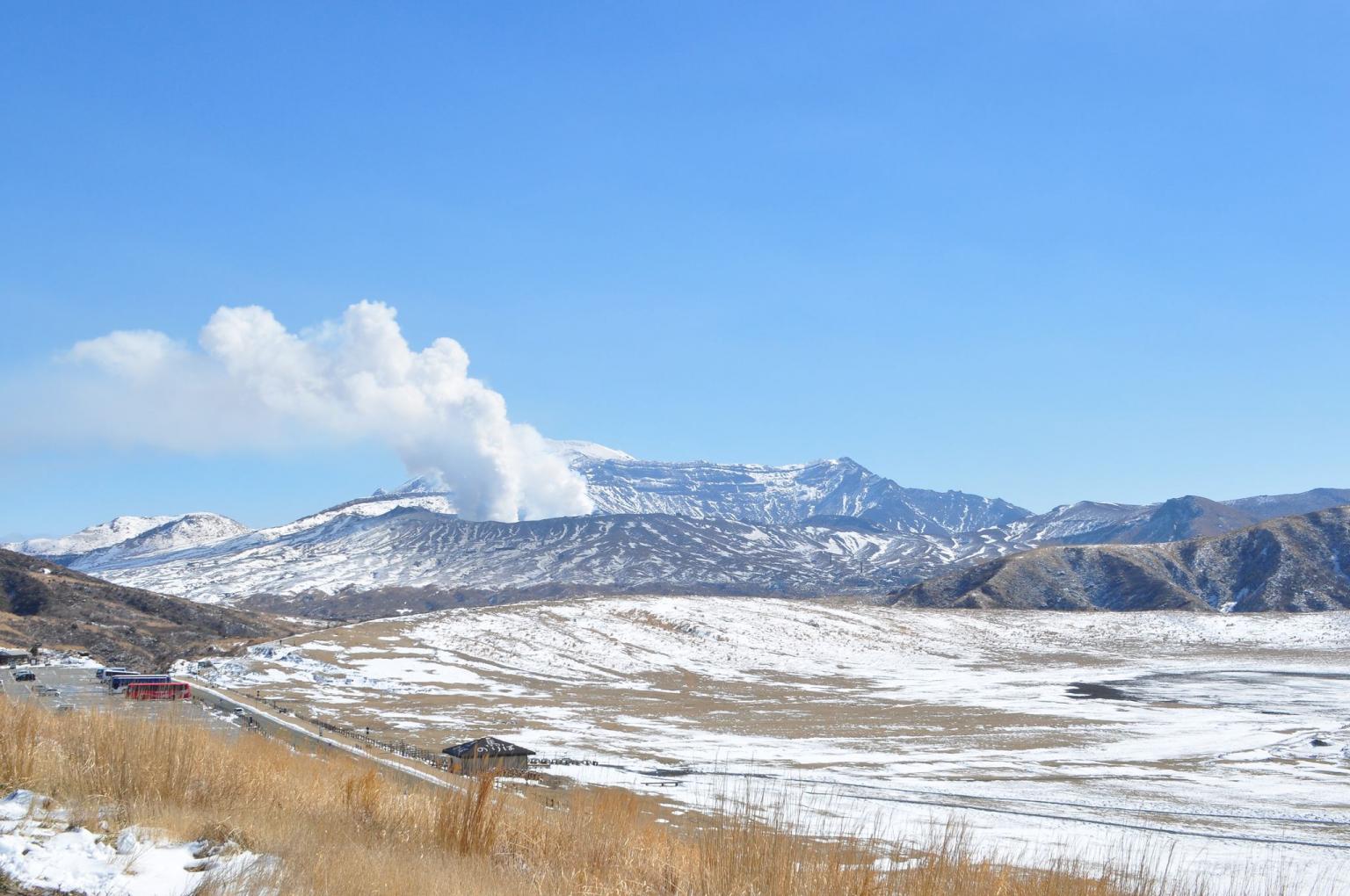
It is a grassland of about 1km located on the Aso Surrounding Scenic Line. A majestic landscape created by the hat mountain in the background and the pond formed by the rain. Tree-lined summers, dreamy snow-white winters, and colorful seasons. You can ride a drawing horse around the grassland for a week, which is very popular among tourists.
Aso Hakuun Sanso
Aso Hakuun Sanso, located in Aso, Kumamoto Prefecture, is a hotel that seamlessly blends traditional Japanese hospitality with modern comfort. Offering panoramic views of the Aso Valley and mountains, the rooms are designed in a traditional Japanese style while equipped with modern amenities. The hotel features natural hot springs, including both indoor and outdoor baths.
Exquisite banquet cuisine is served, highlighting seasonal ingredients. It serves as an ideal base for exploring the Aso volcanic region, making it perfect for guests seeking a tranquil and rejuvenating getaway.
Day 4 Kyushu Hot Springs > Kokonoe Yume Otsuribashi > Yunotsubo Kaido > Yufuin Floral Village > Kinrinko Lake > Beppu Ropeway > Umi Jigoku > Stay in Grandvrio Hotel Beppuwan Wakura
Kokonoe Yume Otsuribashi
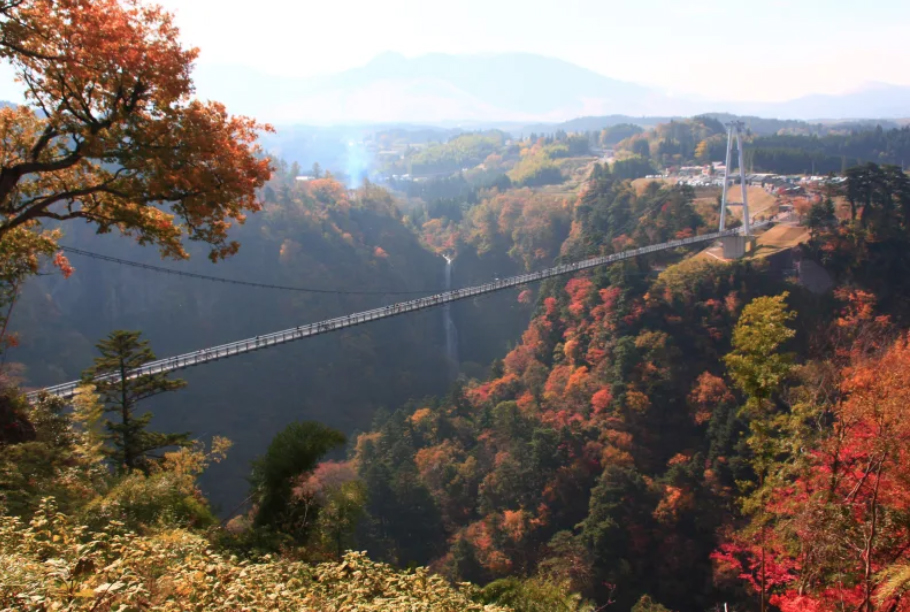
Crossing the Kunoumeng Suspension Bridge in western Oita Prefecture, you will feel as if you are walking in the sky. Kokonoe Yume Suspension Bridge is the longest and tallest bridge in Japan. Standing on it, you can enjoy the rural scenery of Oita, and you can see the two waterfalls, the Naruko River and the valley below 173 meters deep.
The nearby Kuju Mountains and Handa Highlands offer great hiking opportunities, as well as the Tatehara Wetlands and several hot springs, the leader of which is Kurokawa Onsen.
Yufuin Floral Village

If you're a fan of the Harry Potter books, Yufuin Floral Village is a must-see tourist attraction in Oita. It's a shopping town in Yufu City inspired by the Cotswolds villages in England that were also the inspiration for the books’ setting. There, you'll feel like you’ve been whisked away to medieval England as you walk along the cobblestone streets.
Kinrinko Lake
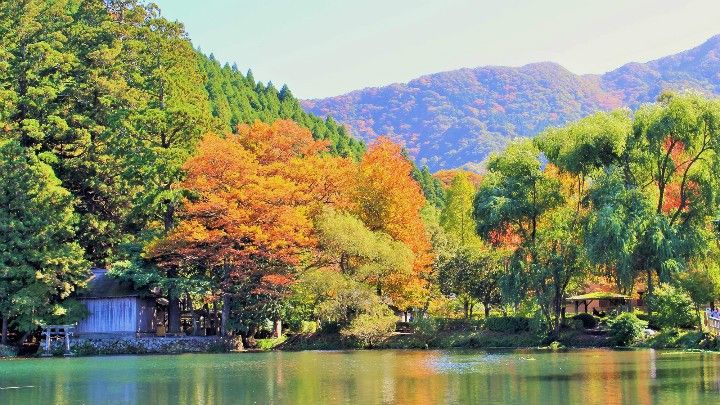
Lake Kinrinko in the town of Yufuin in Oita is famous for its mystical views. The lake’s water is a mixture of cold and hot spring water, causing steam to rise from the lake’s surface. The steam can be seen the best in autumn and winter mornings. Right by the lake is Tenso-jinja Shrine, and its torii gates stand in the lake’s waters. The shrine’s chozu-ya (place for washing hands/mouth) water is pulled from Lake Kinrinko.
Beppu Ropeway
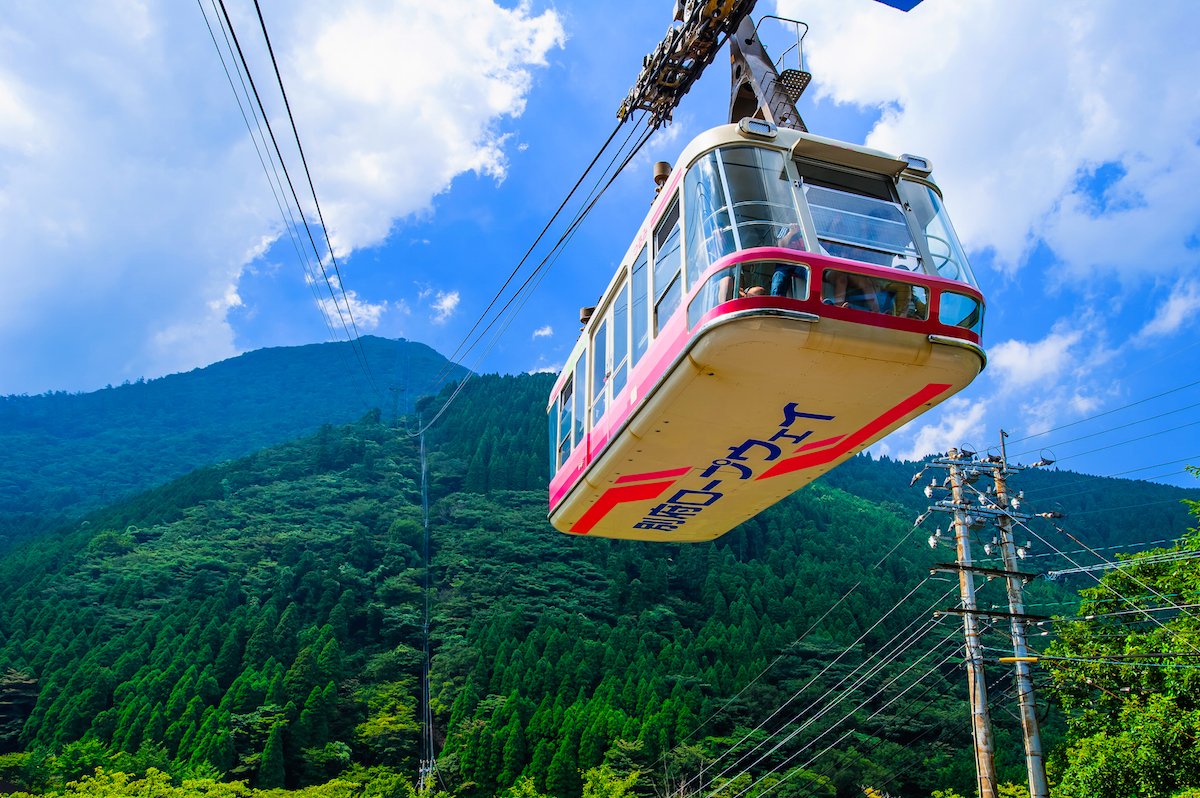
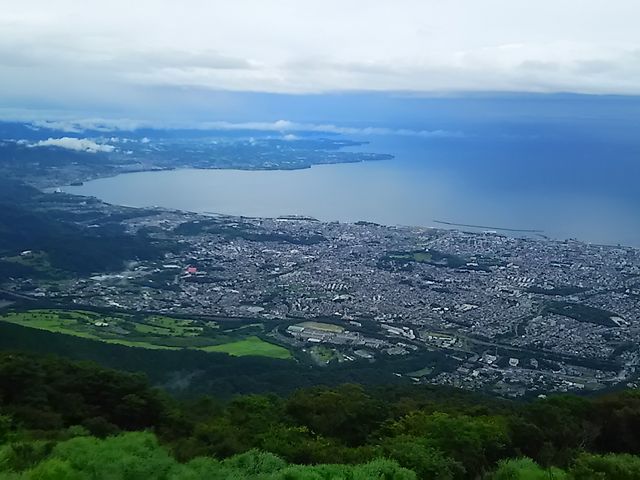
Mount Tsurumi (鶴見岳, Tsurumidake) is a 1375 meter high mountain that overlooks Beppu. The mountain is accessible via the Beppu Ropeway which takes visitors nearly 800 meters up the steep slopes to a small park near the summit. The park offers multiple observation decks with panoramic views of Beppu and Oita City, Mount Yufu and as far as the Kuju Mountains when visibility is good.
The small park is covered by a network of walking paths that lead to the various nearby viewpoints. The actual summit of Mount Tsurumi can be reached in a 15 minute walk from the upper ropeway station. More demanding hiking trails connect Mount Tsurumi to the surrounding mountain peaks. It is also possible to bypass the ropeway and climb up the entire mountain in about two hours via a hiking trail that starts at the lower ropeway station.
Umi Jigoku
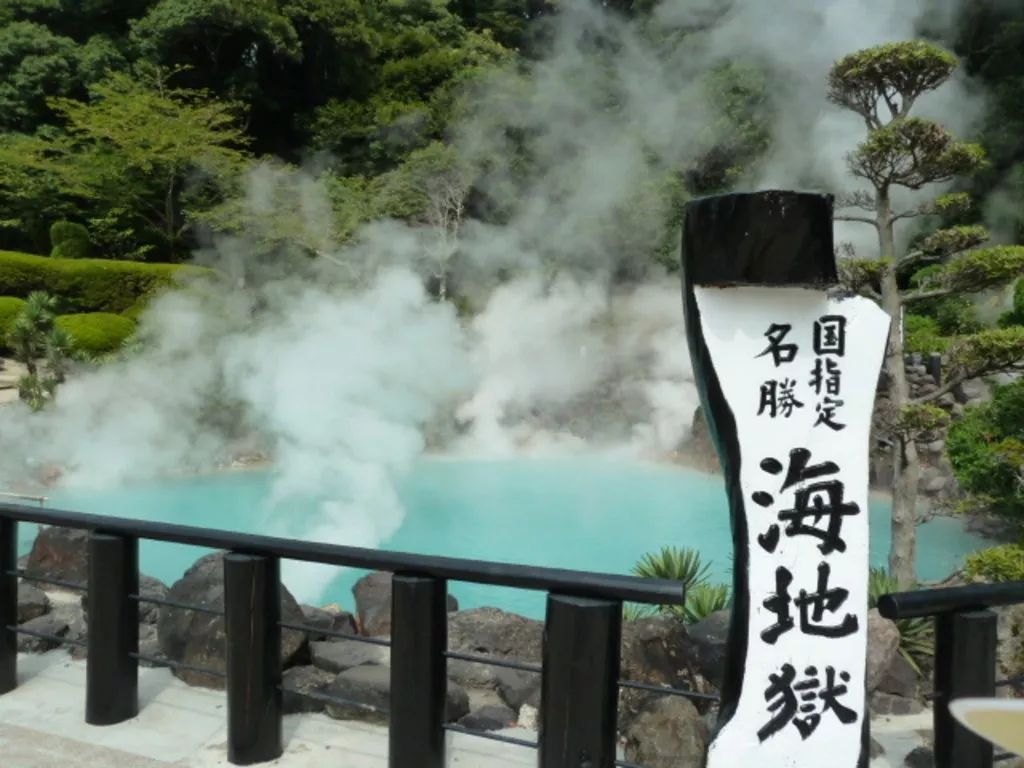
In Beppu, a city of hot springs, there are many jigoku or hells where the water that gushes out creates a breathtaking sight. Jigoku meguri or hell tours have become a standard tourist activity. The most famous of these are the Blood Pond Hell and the Oniishi Bozu Hell, but the largest of these is the Umi-Jigoku or Sea Hell.
Umi-Jigoku has become especially popular recently, not only because of its size and beauty but also because of the many things to see and do there. Today, I will introduce some of the best things to do in Umi-Jigoku.
Grandvrio Hotel Beppuwan Wakura
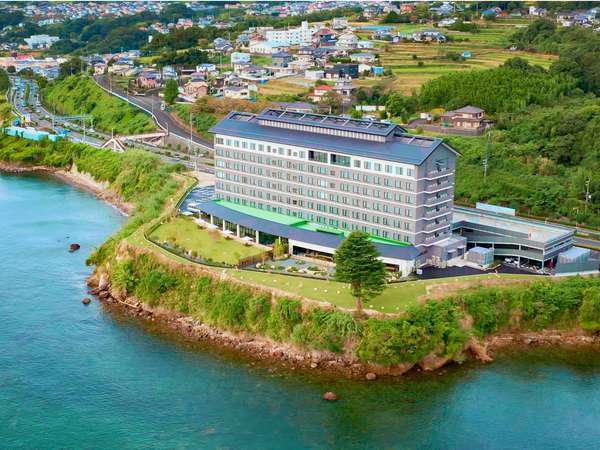
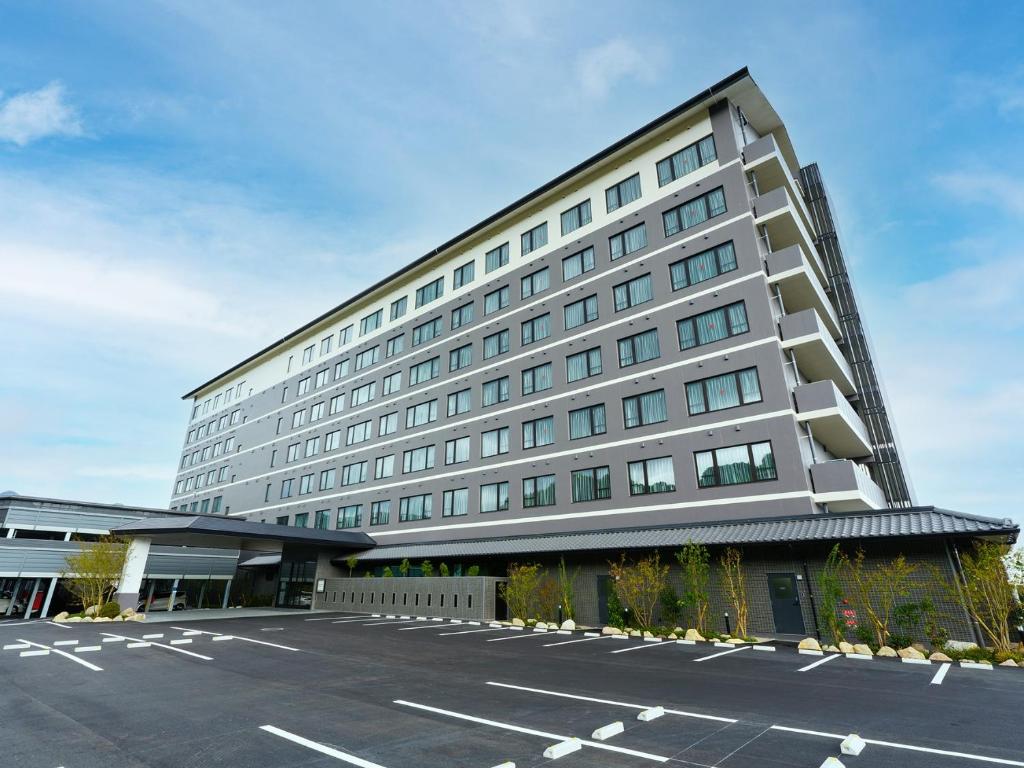

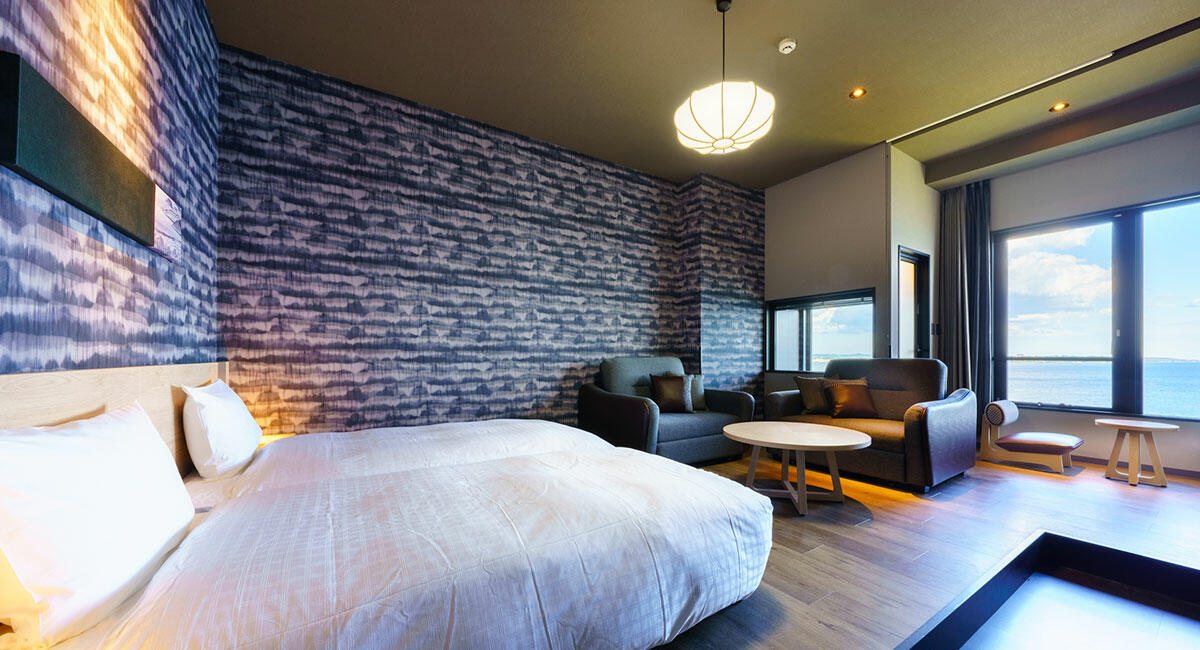
Grandvrio Hotel Beppuwan Wakura is situated in Beppu City, Oita Prefecture, offering a stunning view of Beppu Bay. The hotel boasts a modern design, with rooms equipped with high-end facilities and some featuring balconies with sea views. The hot spring facilities are extensive, including indoor and outdoor baths with water rich in minerals.
With a variety of dining options, the hotel caters to a diverse range of culinary preferences. It is the perfect choice for those seeking a luxurious and comfortable accommodation experience.
Day 5 Beppu > African Safari > Showa Town > Senbutsu Limestone Cave > Stay in RITOAS
African Safari
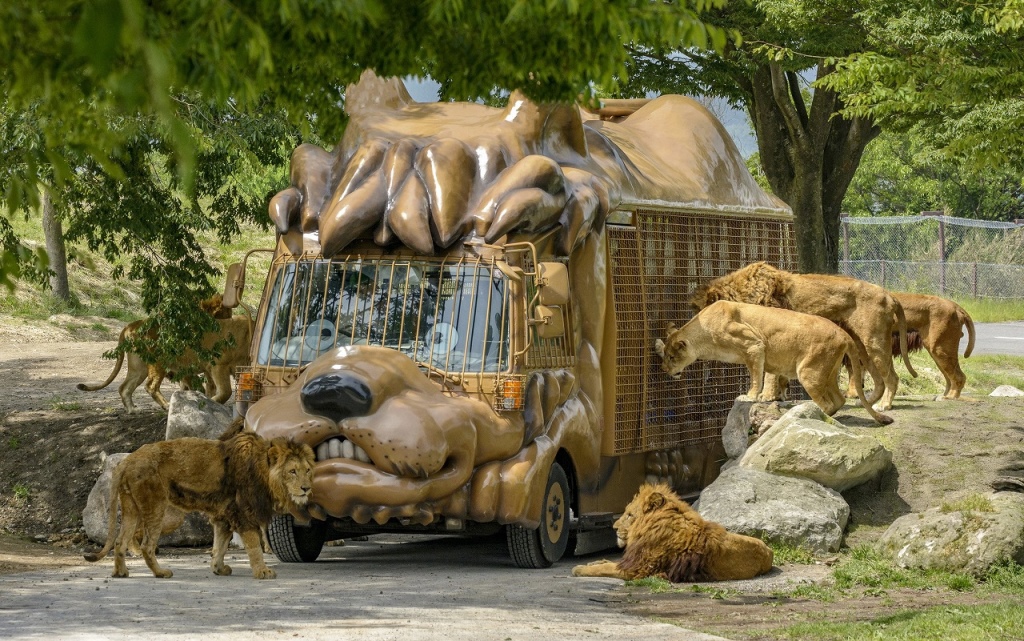
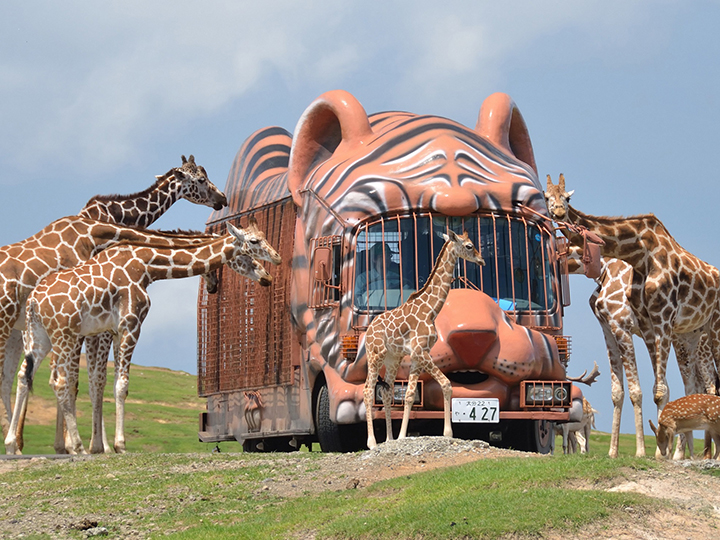
The park has an animal area where bears, elephants, giraffes, lions, tigers and other animals are raised in a close-to-natural state, a contact ranch where you can directly touch small animals such as mini pigs, mini cows, goats, sheep, and rabbits, and a close-up There is an intimate Kangaroo Forest where you can watch kangaroos, a horse riding experience corner where you can try out ponies, a dog salon and a cat salon where you can interact with a variety of dogs and cats. In the animal area, you can also take a tropical jungle bus to observe animals up close and feed lions, tigers, giraffes and other animals.
Showa Town
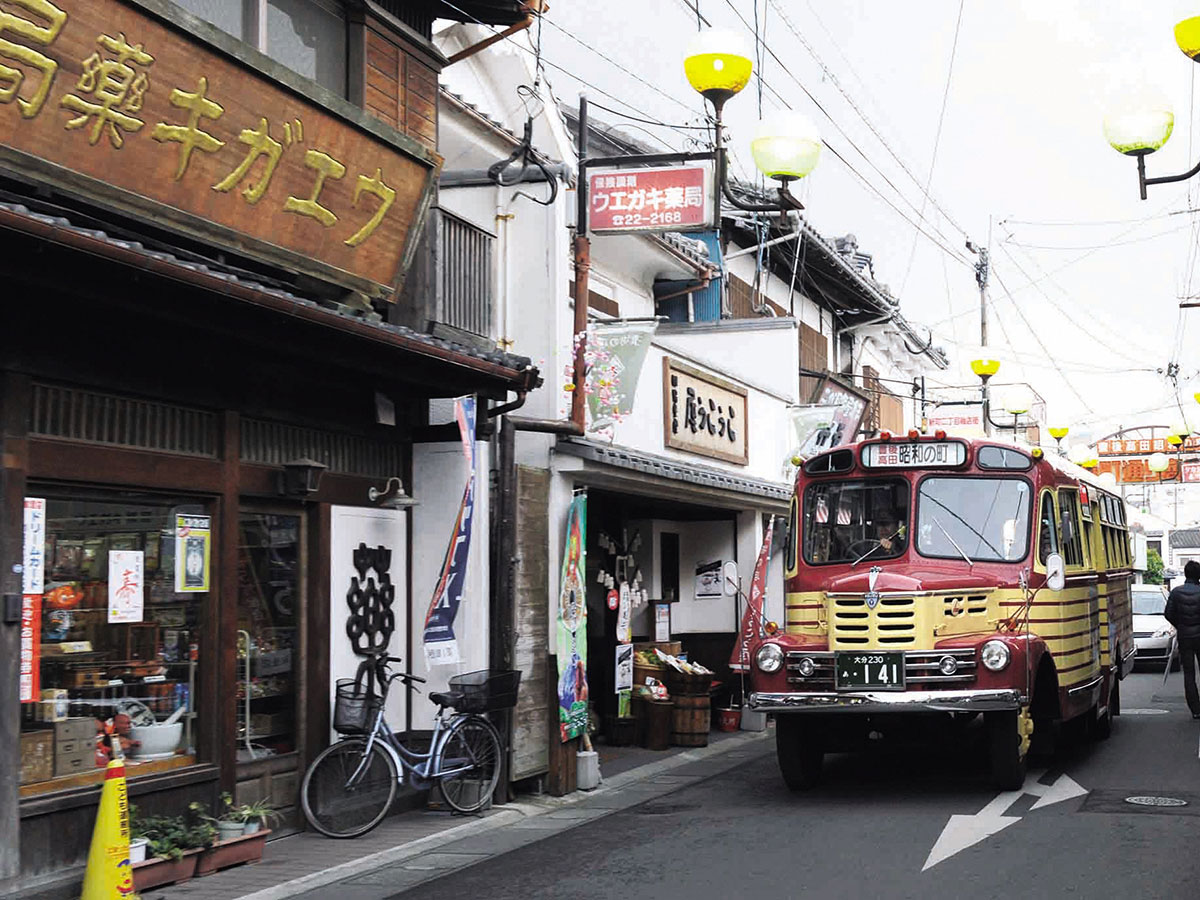
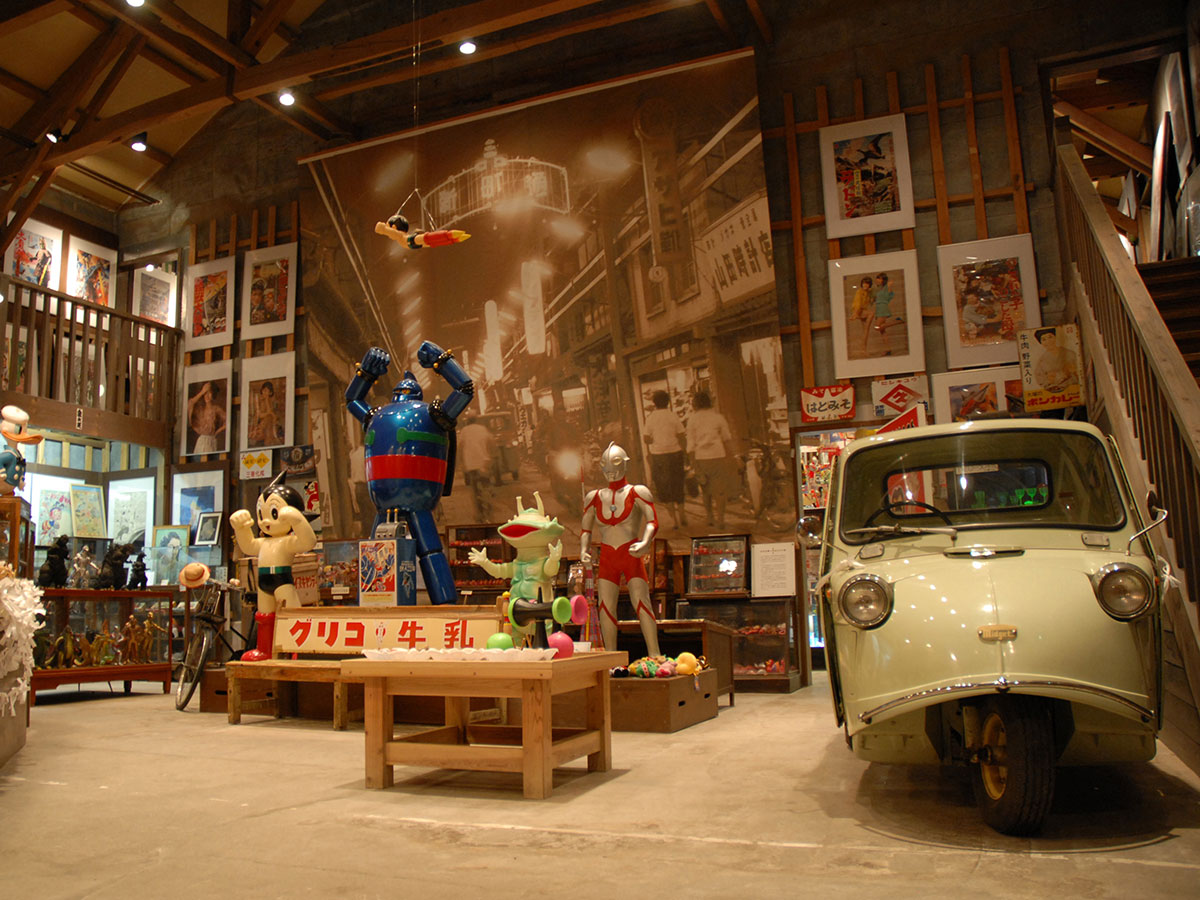
Bungotakada City’s Showa Town brings back to life a lively and bustling shopping street from the late 1950s and early 1960s. Immerse yourself in the warm and nostalgic atmosphere of this town.
In each and every store there is a display of “one treasure for one shop,” telling the story of the shop’s history, and “one product for one shop,” passed down through the generations, is sold. Walk through this townscape, with its retro signboards and rows of buildings, and you’ll feel as if you have slipped back in time to the Showa era (1926-1989). The Showa Town Bonnet Buses run mostly on Saturdays, Sundays, and public holidays and offer a free sightseeing course around Showa Town.
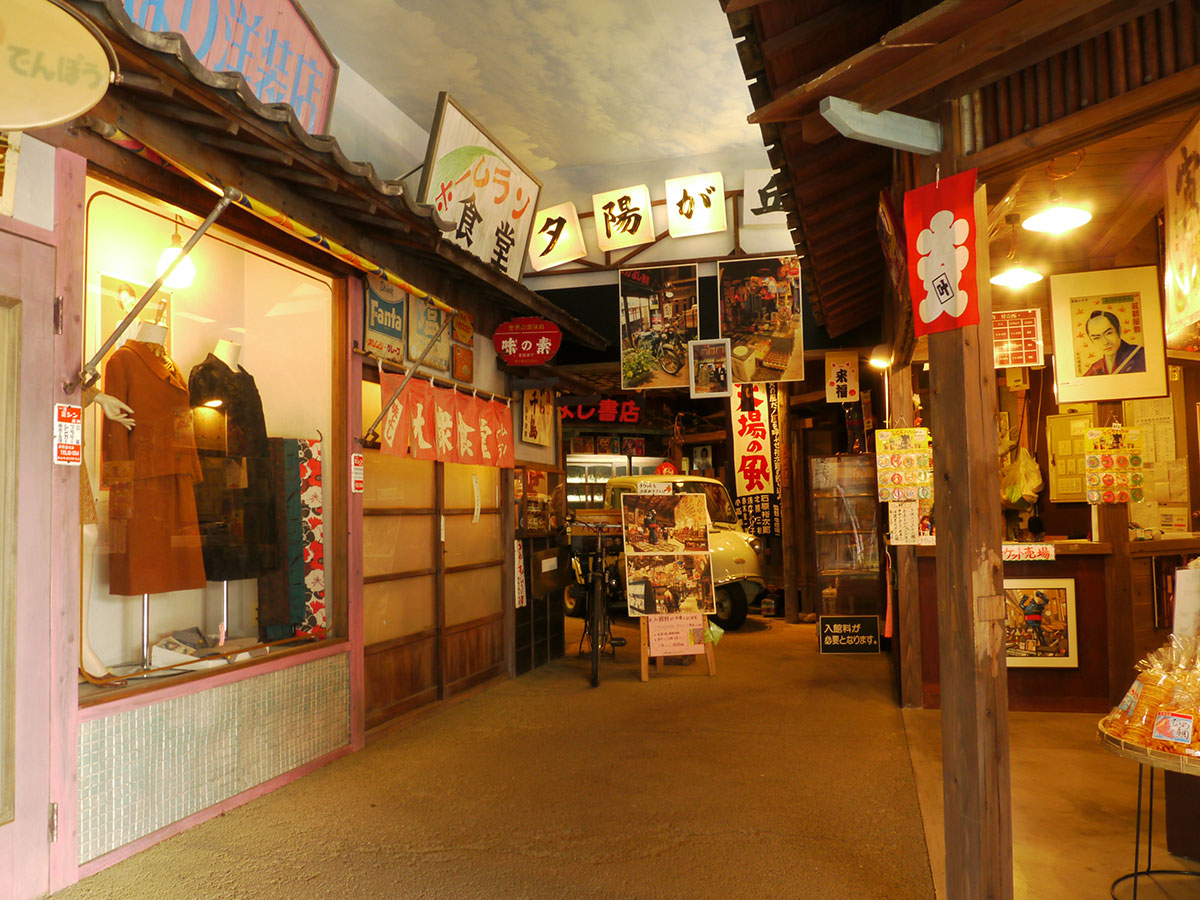
Senbutsu Limestone Cave
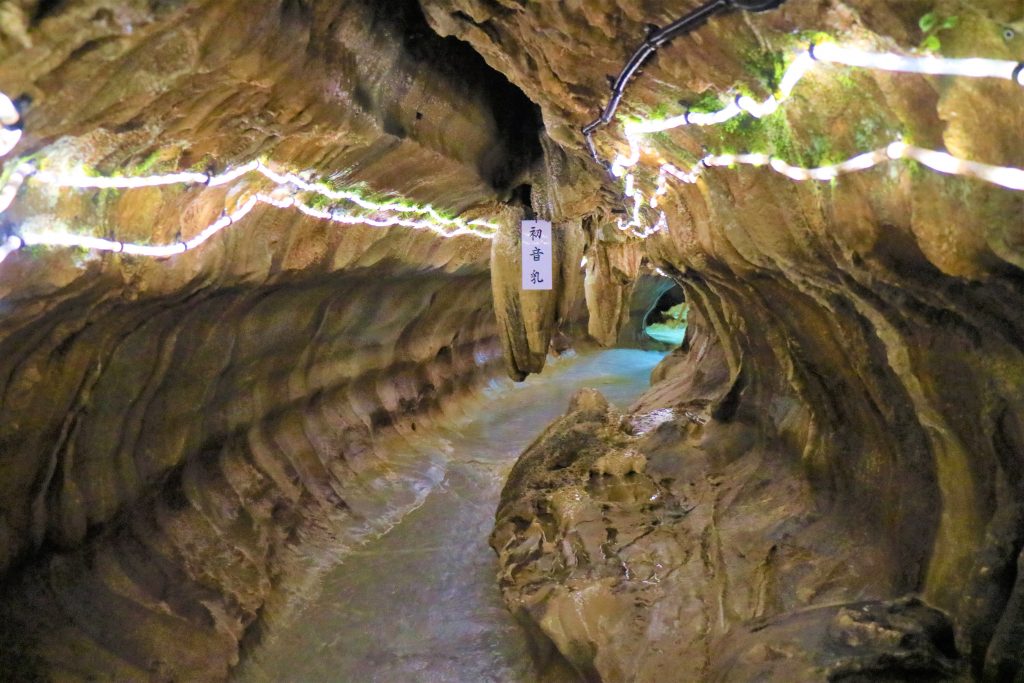
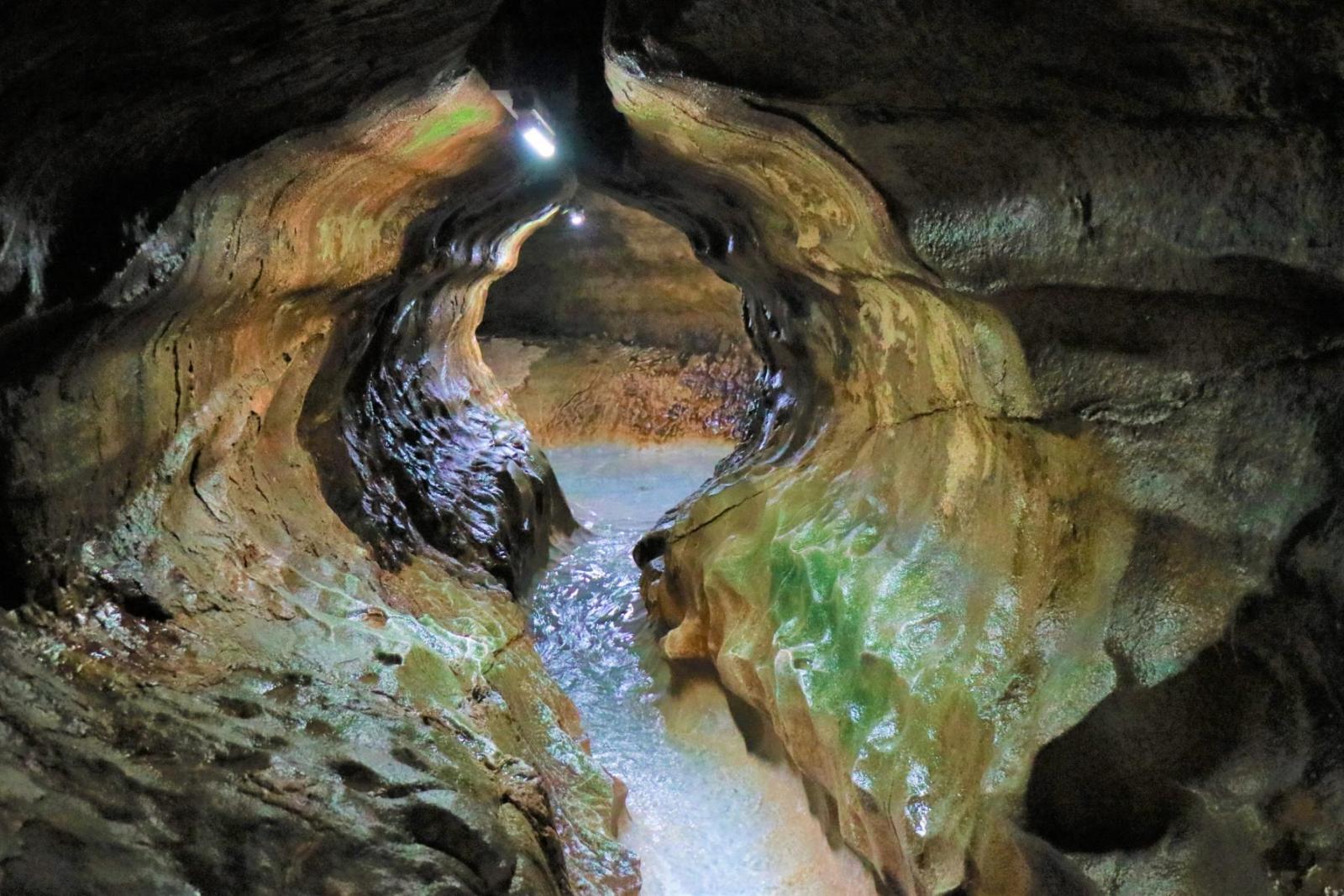
The karst formation of Hiraodai is said to have over 200 caves, and of these, three have been open for tourists to enter without special attire. A must-see is the Senbutsu Limestone Cave with 30 stalactites hanging from the cave ceiling in the entrance. The cave is designated as a national natural monument. Upon proceeding 480m you start splashing as you walk down a stream, feeling like a real explorer. The Mejiro Limestone Cave has one of Japan’s largest monoliths, at around 20m. Everyone from beginners to experts can go caving here, so if you are interested please ask at the reception. Ojika Limestone Cave is known as the “Dinosaur Trap”, having a vertical shaft for an entrance which is unusual in Japan. Upon descending 25m the underground streams flow through the caves, giving a clear picture of the karst formation. Fossils of the Japanese river otter, Mukashi Japanese deer and the Naumann elephant (Palaeoloxodon naumanni) have been discovered in this cave.
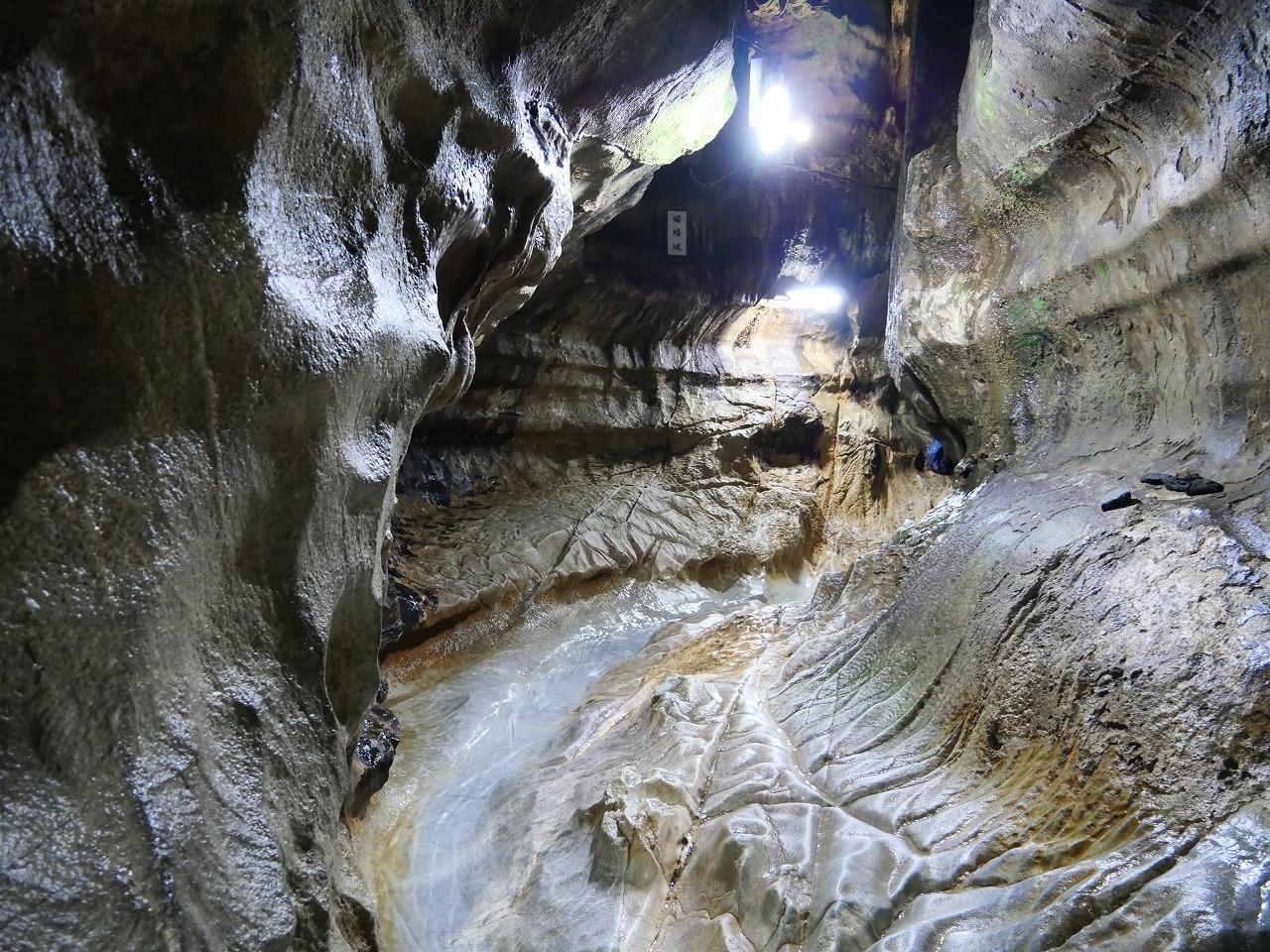
RITOAS
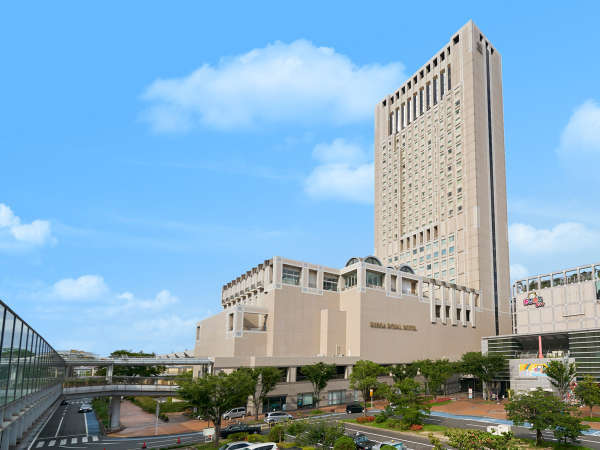
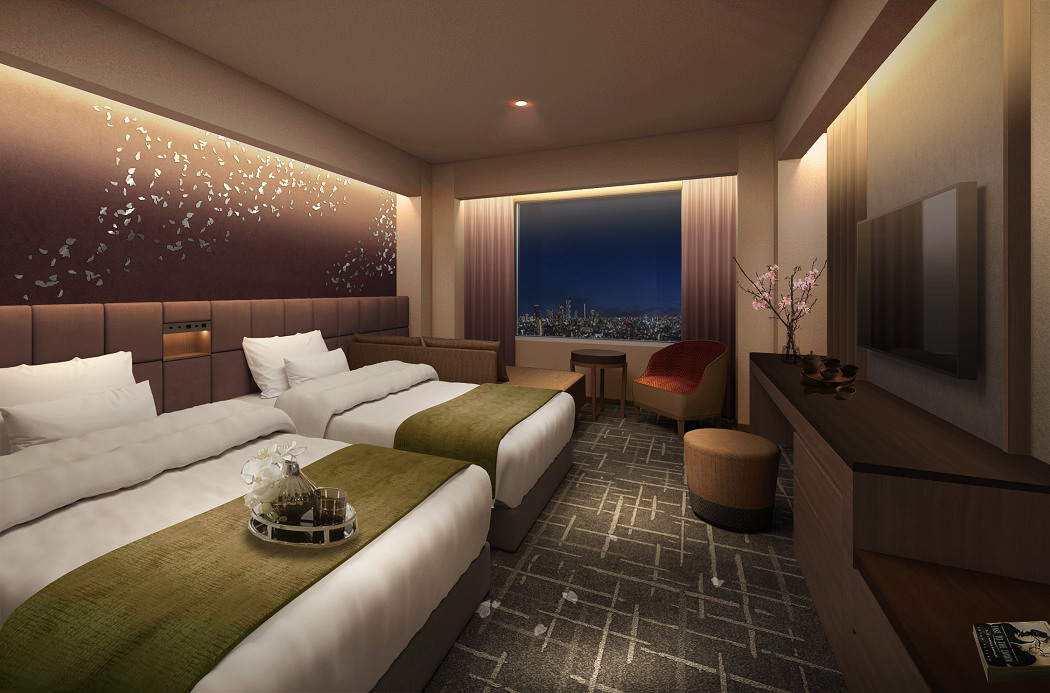
Day 6 Kokura > Karato market > Mojiko Retro > Tanga Market > Kokura Castle > Uomachi Gintengai Street > Stay in ANA Crowne Plaza
Karato market
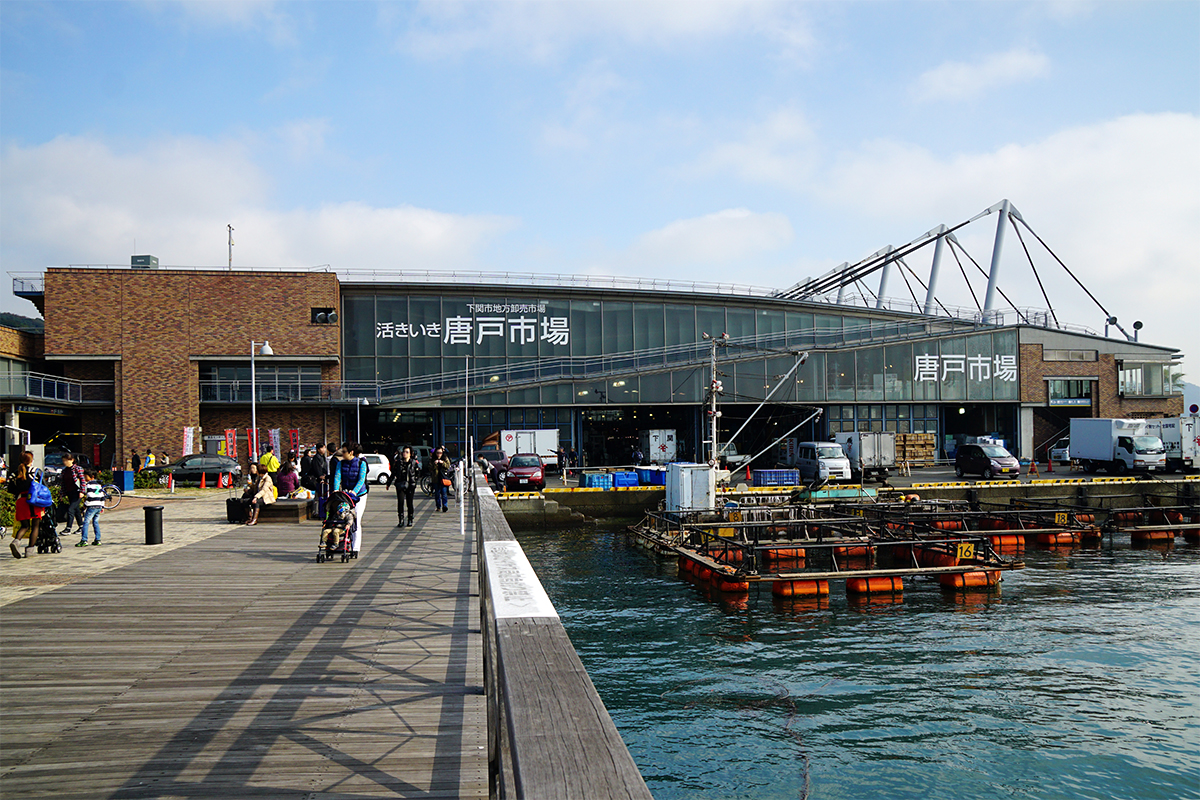
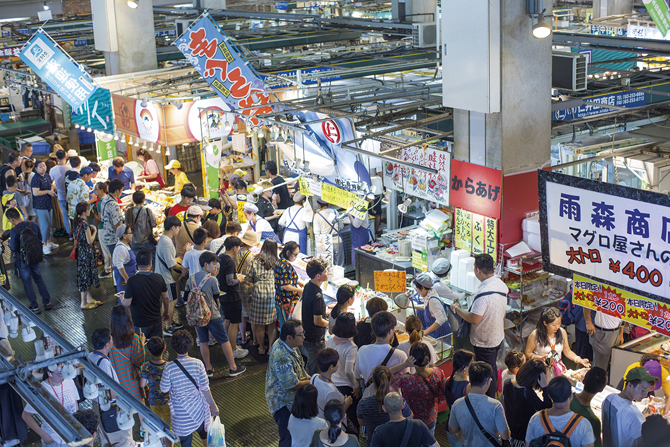
There is a lively market at the pass where local fishermen sell their fresh catch at very reasonable prices. Karato Market started as a street market in 1909 and now ships to all over Japan. Although the main product of Karato Market is seafood, many farmers from Yamaguchi and surrounding areas also set up stalls in the market, so you can also buy many seasonal ingredients.
Mojiko Retro


The Port of Moji (Mojiko) is an international trade port opened in 1889 and located at the northern edge of Kyushu.
Its prosperity as a transport hub attracted many Western-style buildings housing shipping companies and trading firms around it. The Mojiko Retro district is a restored reproduction of the district around the port in olden times.
In this district, various buildings have been preserved and are open to visitors, including the iconic Mojiko Station, former Moji Mitsui Club, where Einstein stayed, and former Kyushu Railway Headquarters (currently Kyushu Railway History Museum).
You can immerse yourself in the atmosphere of Japan in the late 19th to early 20th centuries here.
Tanga Market


Tanga Market is a covered local market street in Kitakyushu. Known as the "Kitchen of Kitakyushu", the market started in the early 1900s at its current location adjacent to the Kantake River, which provided a convenient means for boats to easily deliver fresh ingredients. There are about 120 shops selling seafood and prepared foods packed into the relatively small block that makes up the market, including a handful of restaurants.
Kokura Castle
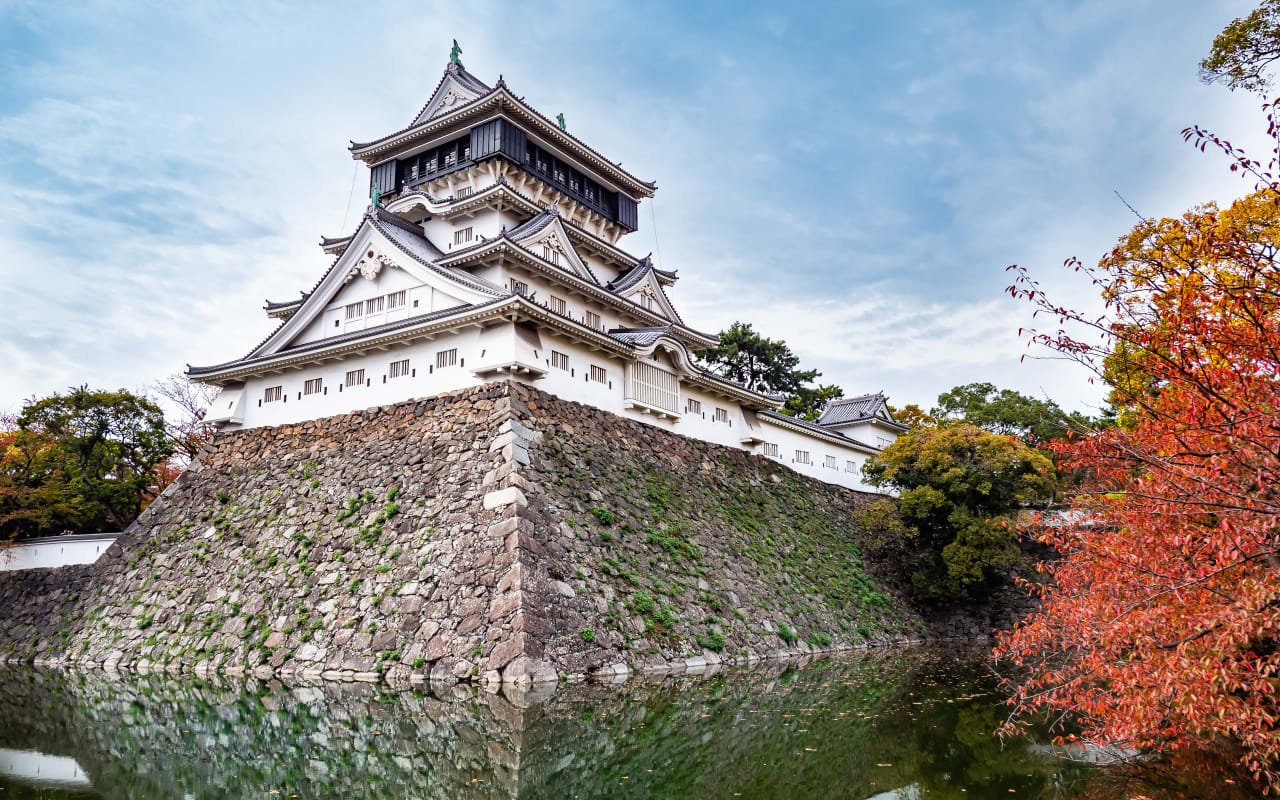
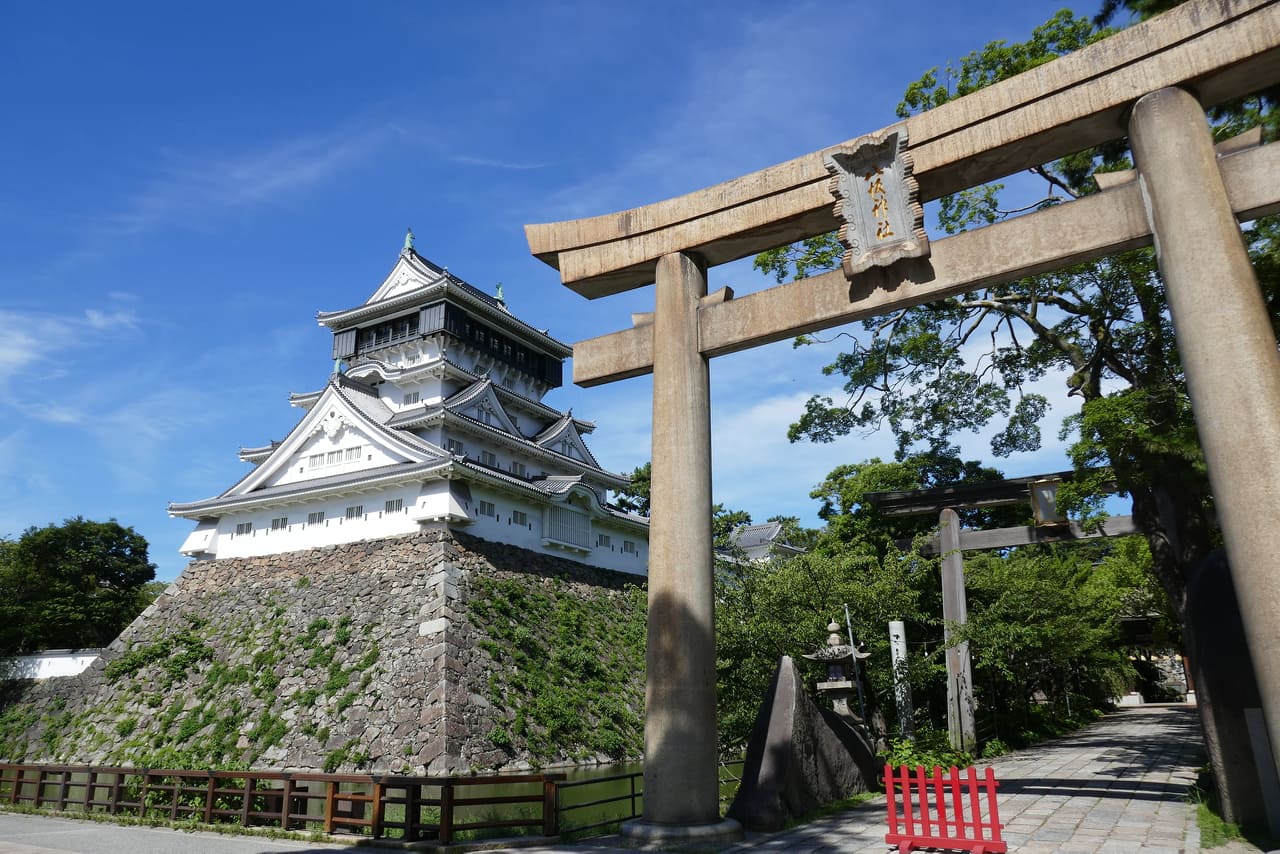
Kokura Castle was built in 1602 at the beginning of the Edo Period. The castle was destroyed by fire in 1866, and the current castle tower is a ferro-concrete reconstruction from 1959. The castle's traditional architecture provides an interesting visual contrast to the neighboring modern shopping and entertainment center.
The castle grounds are now known as Katsuyama Park and are a popular cherry blossom spot that is usually in bloom around early April. The castle keep seems to have four floors from the outside, but actually has five on the inside. The modern interior introduces the local history with displays, an interactive zone and a small theater where visitors can get a hands-on and visual experience of past castle life. The castle's top floor offers panoramic views over the city.
Uomachi Gintengai Street


Source by:
https://www.kyushuandtokyo.org/
https://www.crossroadfukuoka.jp/
https://www.gururich-kitaq.com/
https://www.kurokawaonsen.or.jp/
橘子貓旅遊及包車討論區


